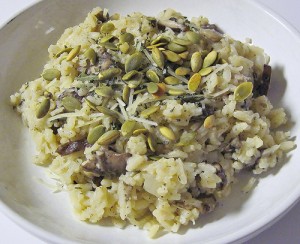People often refer to the low oxalate diet as if only one right way to be on a low oxalate diet existed. This isn’t true. There are as many effective ways to be on a low oxalate diet as there are people who have healed on the low oxalate diet. Here are some low oxalate diet basics, plus four effective approaches to the low oxalate diet.
Low Oxalate Diet Basics: The low oxalate diet is designed to minimize the oxalate you ingest while still insuring that you receive good nutrition. It’s virtually impossible to eliminate oxalate from your diet, but you can reduce oxalate to about 50 mg. a day and still eat a wide variety of healthy fruits, vegetables, meats and dairy. Some foods, such as nuts, grains, legumes and spices, are more limited, but each food category has at least some low oxalate or very low oxalate choices that allow you to round out your diet and add a little fun.
Generally speaking, eating 40 – 60 mg. of oxalate a day is considered a low oxalate diet for adults, but how much oxalate you target is a personal choice. Each person’s body is different and has different needs. Some people with oxalate-related symptoms can eat 60 – 80 mg. of oxalate a day with no problems, while others need to go below 40 mg. oxalate per day to heal. If you are unsure, start with 40 – 60 mg. oxalate per day. This range has helped many people heal and is a great starting point for most low oxalate dieters with two big exceptions. If you have been eating a very high oxalate diet for a long time, start with as much as 120 mg. oxalate per day and slowly work your way down to 60 mg. per day to prevent severe dumping/detoxifying symptoms. Or if you are giving the low oxalate diet to a young child, start with as little as 20 -30 mg. oxalate a day to compensate for their small body size and reduced calorie needs.
Four Effective Approaches to the Low Oxalate Diet:
1.) The Count and Measure Approach – This is a great approach to the low oxalate diet for people who want to make sure that they are getting 40 – 60 mg. of oxalate each day. People who use this approach often measure the food they eat and keep a running log of its oxalate content. This lets them know how much oxalate they’ve eaten during the day and how much oxalate they have left. The count and measure approach to the low oxalate diet may be especially attractive to people who have had success or understand the process of counting calories, since it is very similar. It also appeals to scientifically-minded people and people who tend to cheat or accidentally eat too much oxalate if they don’t keep track. This approach to the low oxalate diet may also be a good “occasional strategy” to make sure you are reaching your oxalate goals. I go back to this approach every once in a while to keep myself honest (see Serving the Low Oxalate Diet Family Style).
Positives: accuracy, peace-of-mind, allows the dieter flexibility to choose some higher oxalate foods; easily modified to allow a higher or lower daily oxalate target
Draw-backs: time-consuming; takes extra dedication; you must have an accurate, up-to-date list of the oxalate content of foods (see How to get an Accurate Low Oxalate Food List); can cause severe dumping/detoxifying symptoms in people who have previously eaten very high oxalate diets (unless they use this approach with a higher oxalate target, such as 100 mg. oxalate per day)

Good thing he can eat as much cucumber as he wants when using the category approach to the low oxalate diet!
2.) The Category Approach – This is a great approach for people who are just starting out on the low oxalate diet and for those who don’t want to measure and count every piece of food they put in their mouth. Measuring brings peace of mind to some people, but it creates stress for others. If measuring your food sounds stressful or overwhelming, this may be the approach for you. People who use this approach choose their foods each day by oxalate category. They eat all the low oxalate and very low oxalate foods they want, plus 1-2 servings of medium oxalate foods each day. If you eat about 2,000 calories a day, get most of your protein from animal sources (very low oxalate), get at least 20% of your calories from fat (very low oxalate), and limit your low oxalate herb and spice intake to about 1 teaspoon per day, you can be fairly confident that your oxalate intake is 40 – 60 mg. oxalate most days. If you eat a lot of low calorie herbs, eat very little fat, have high calorie demands, or satisfy most of your protein needs with legumes, then you may find that your oxalate levels are too high using this approach, even though you are only eating low oxalate foods. I was a collegiate athlete and a vegetarian, eating over 4,000 calories a day, when I started the low oxalate diet and this approach just didn’t work for me. I had to learn to measure and count to keep my oxalate levels low.
Positives: easier than measuring and counting; doesn’t take a lot of time; you don’t need to worry about every piece of food you eat; you can use this approach using simple lists that state whether a food is low oxalate, medium oxalate or high oxalate; can be adjusted to allow more oxalate or less oxalate by changing how many medium-oxalate foods you eat
Draw-backs: not “feeling sure” about your oxalate intake; hard to incorporate high oxalate foods without a lot of guess work; it’s easy for vegetarians, herb-lovers and athletes with high calorie demands to get too much oxalate
3.) The Elimination and Substitution Approach: This is a great approach to the low oxalate diet for people who want to start slowly, who already have a very limited diet because of other dietary needs, who have been eating very high oxalate for a long time, or who want to see if eliminating just the highest oxalate foods will help them. It especially appeals to people who like to ease into things or who are on the low oxalate diet for health maintenance (e.g. people who have healed their oxalate-related symptoms may choose to eliminate only high oxalate foods as a maintenance strategy). People who use this approach often start by eliminating the highest oxalate foods from their diet. A few days or weeks later, they remove “lower high” oxalate foods. A few days or weeks later they start removing some “higher medium” oxalate foods. They continue this process until they feel like they’ve reached an acceptable oxalate level for their body. If the foods they eliminate are foods they eat often, they may replace that food with a low oxalate or “lower medium” oxalate food instead of just eliminating it. For example, they might replace spinach with kale, peanut butter with Sunbutter, almonds with coconut or pumpkin seeds, and carrots with butternut squash.

Mushroom Risotto with Parmesan cheese, Oregano and Roast Pumpkin Seeds: One yummy dish you won't have to eliminate on the low oxalate diet.
Positives: allows a lot of flexibility; lets people slowly change foods and habits at their own pace; may be easier than a drastic change; reduces the chance of severe dumping/detoxifying symptoms in people who have eaten a very high oxalate diet for a long time; allows people on a limited diet the flexibility to explore how one or two low oxalate changes may help them, allows people to start a low oxalate diet with only a simple list of high oxalate and medium oxalate foods.
Draw-backs: May be too slow of a start for people who naturally eat a “medium” oxalate diet; not structured enough for people who want or need structure; may cause someone to abandon the low oxalate diet prematurely because they don’t see results fast enough; may be too easy or temping to leave in a lot of medium oxalate foods; may never restrict oxalate levels enough for some people to heal
4.) The Mixed Bag Approach – This is an effective approach to the low oxalate diet for people who want a lot of flexibility and are confident with their ability to adjust their diet as their body needs it. People who use this approach usually combine two or more of the above approaches until they can consistently meet their daily oxalate goals in a way that best fits their personality and lifestyle. For example, a vegetarian who is worried about getting too much oxalate using the category approach may roughly estimate her portion sizes (“the eyeball method”)and daily oxalate intake to make sure she stays within acceptable limits instead of measuring everything exactly. Or a man who has eaten a high oxalate diet for a long time may start with the elimination and substitution approach, slowly eliminating more high and medium oxalate foods until he is almost following the category approach, except he eats as much of some medium oxalate foods as he wants (such as sprouted sunflower seeds) instead of picking and choosing 1-2 different medium oxalate foods each day.
Positives: flexibility; allows you to listen to your body and adjust your diet accordingly; tailored to fit your lifestyle, values and needs; may be more sustainable for long-term low oxalate dieters; is usually best for someone who has been on the low oxalate diet for a long time
Drawbacks: some people may prefer a more structured approach to the low oxalate diet; may make “cheating” or habitual “just one more bite” problems too easy; may be hard for beginners; may lead to too much oxalate consumption; may be hard to accurately estimate your oxalate intake
How do you approach the low oxalate diet? Let us know in the comments section below.
Photo credits go to accent on eclectic for Produce Market, to woodleywonderworks for Enormous Cucumbers and to SaucyGlo for Mushroom Risotto with Parmesan, Oregano and Roast Pumpkin Seeds.

{ 19 comments… read them below or add one }